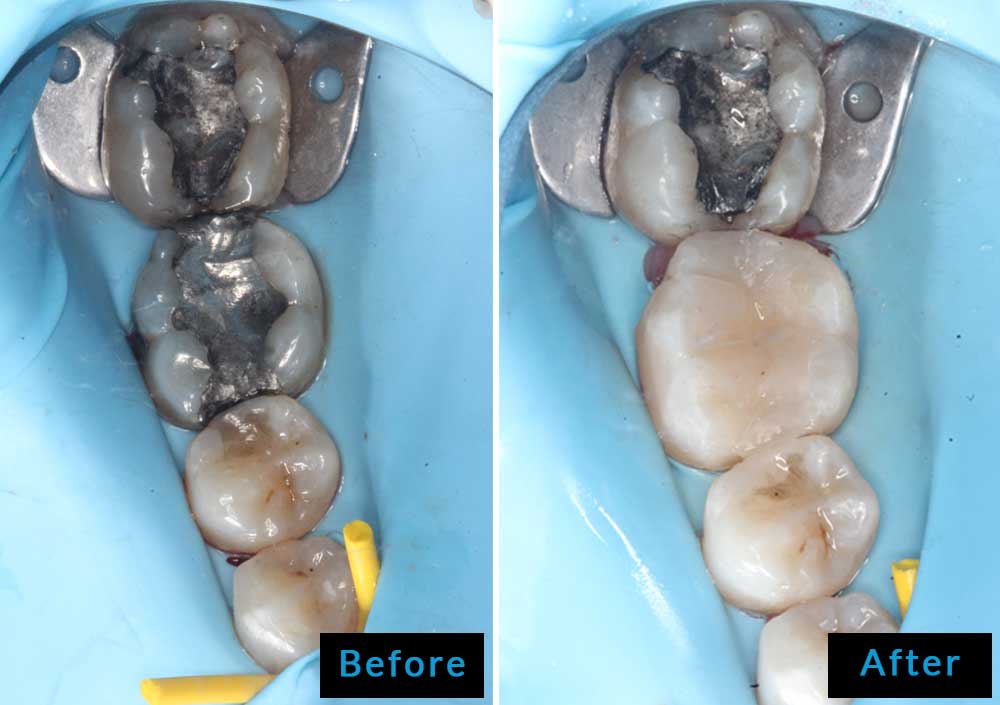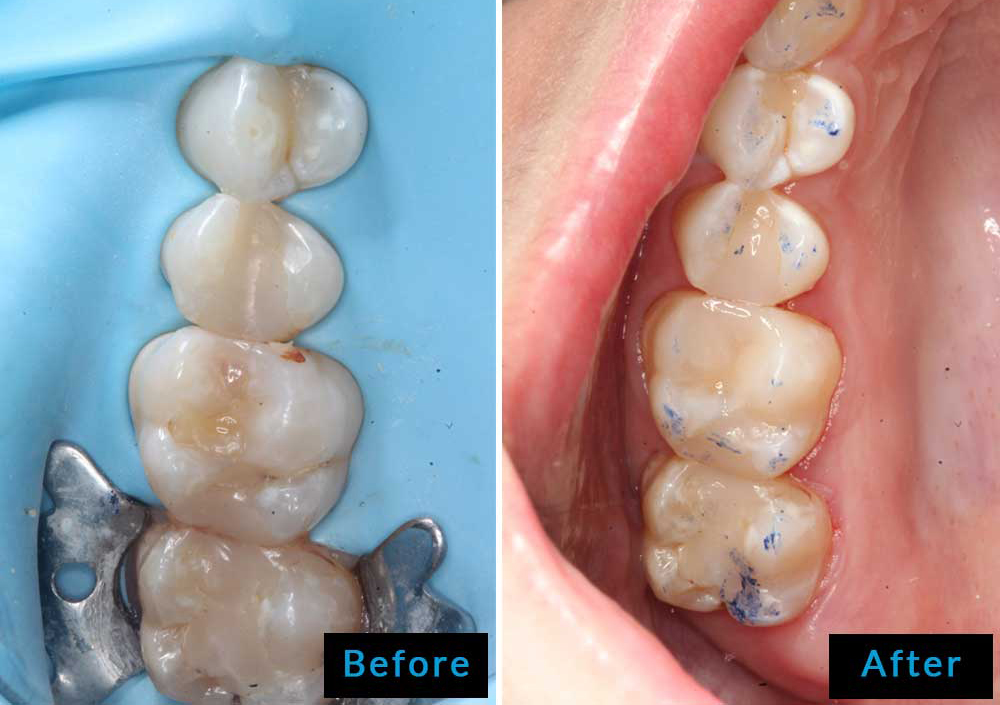Save Your Tooth Using Restorative Fillings
The decayed portion of teeth, known as cavities, can start as a minor problem and eventually grow into a much larger issue. A dentist often places what’s called a filling in the cavity to prevent further tooth erosion. This treatment allows you to use the tooth as usual while preventing further decay. At The Hope Dental Care Centre, Dr. Far, and Gang Wang, can fill cavities using options such as amalgam and composite.
The Tooth Filling Process

Your dentist will first apply a local anesthetic directly into the surrounding area near the tooth to be filled. Then, he will remove the decayed hard tissue from the tooth using a drill, or air abrasion instrument.
Next, he will test or probe the area to learn if there is any residual decay. After the site is free from decay, he will prepare the space to receive the filling by cleansing the cavity of debris and bacteria.
The doctor may take a few additional steps with composite or tooth-coloured fillings since the composite is applied in layers. After completing the process, he will shape the material, trim off the excess, and polish the completed restoration.
The Filling Material Options available
We offer three filling material options for our patients, which include” gold, silver (amalgam), and composite.
Gold fillings do not corrode and can last 10-15 years or longer. They are strong enough to endure chewing pressure, and some prefer their aesthetic appeal. However, gold fillings are generally the most expensive, around ten times higher than silver, and require at least two office visits.
Silver or amalgam fillings are the least expensive option. However, like gold, they don’t match the tooth’s natural colour. These fillings also involve destroying more tooth tissue before placement. And biting, hot or cold fluids can expand or contract the filling causing possible cracks and fractures as opposed to other materials. Approximately one percent of humans are allergic to the mercury found in amalgam fillings.
Composite fillings look like your natural tooth and are bonded to the tooth for more support. They are versatile and can repair broken, chipped, and worn-down teeth. Plus, they often require less removal of tooth tissue as preparation for their placement compared to amalgam fillings.
Learn More About Your Restorative Filling Options
To find out more and discover which filling is proper for you, contact The Hope Dental Care Centre at (343) 803-6333 to arrange your consultation with one of our dentists. Our office is conveniently located at 500 Hazeldean Rd Suite 107, Kanata, ON.







